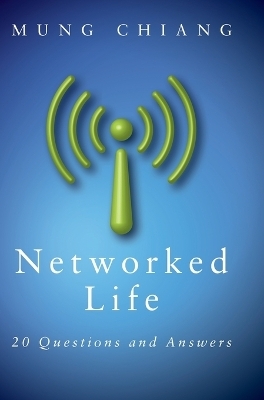
Networked Life
Cambridge University Press (Verlag)
978-1-107-02494-6 (ISBN)
How does Google sell ad space and rank webpages? How does Netflix recommend movies and Amazon rank products? How can you influence people on Facebook and Twitter and can you really reach anyone in six steps? Why doesn't the internet collapse under congestion and does it have an Achilles' heel? Why are you charged per gigabyte for mobile data and how can Skype and BitTorrent be free? How are cloud services so scalable and why is WiFi slower at hotspots than at home? Driven by twenty real-world questions about our networked lives, this book explores the technology behind the multi-trillion dollar internet and wireless industries. Providing easily understandable answers for the casually curious, alongside detailed explanations for those looking for in-depth discussion, this thought-provoking book is essential reading for students in engineering, science and economics, for network industry professionals and anyone curious about how technological and social networks really work.
Mung Chiang is a Professor of Electrical Engineering at Princeton University and Director of the Princeton EDGE Lab. He has received the IEEE Kiyo Tomiyasu Award and a US Presidential Award for Scientists and Engineers, for his research on networking. A co-founder and advisor to several startups, he also received a Technology Review TR35 Award for his contributions to network technology innovation and is a Fellow of the IEEE.
1. What makes CDMA work for my cell phone?; 2. How does Google sell ad space?; 3. How does Google rank webpages?; 4. How does Netflix recommend movies?; 5. When can I trust product ratings on Amazon?; 6. Why does Wikipedia even work?; 7. How do I viralize a YouTube video and tip a Groupon deal?; 8. How do I influence people on Facebook and Twitter?; 9. Can I really reach anyone in 6 steps?; 10. Does the Internet have an Achilles' heel?; 11. Why do AT&T and Verizon Wireless charge me $10 a GB?; 12. How can I pay less for my internet connection?; 13. How does traffic get through the internet?; 14. Why doesn't the internet collapse under congestion?; 15. How can Skype and BitTorrent be free?; 16. What's inside the cloud of iCloud?; 17. Netflix, iTunes, IPTV: which way to watch video?; 18. Why is WiFi faster at home than at a hotspot?; 19. Why am I only getting a few percent of advertised 4G speed?; 20. Is it fair that my neighbour's iPhone downloads faster?
| Erscheint lt. Verlag | 10.9.2012 |
|---|---|
| Zusatzinfo | Worked examples or Exercises; 20 Tables, black and white; 300 Line drawings, unspecified |
| Verlagsort | Cambridge |
| Sprache | englisch |
| Maße | 188 x 253 mm |
| Gewicht | 1160 g |
| Themenwelt | Mathematik / Informatik ► Informatik ► Netzwerke |
| Mathematik / Informatik ► Informatik ► Theorie / Studium | |
| Technik ► Elektrotechnik / Energietechnik | |
| Technik ► Nachrichtentechnik | |
| ISBN-10 | 1-107-02494-3 / 1107024943 |
| ISBN-13 | 978-1-107-02494-6 / 9781107024946 |
| Zustand | Neuware |
| Haben Sie eine Frage zum Produkt? |
aus dem Bereich


